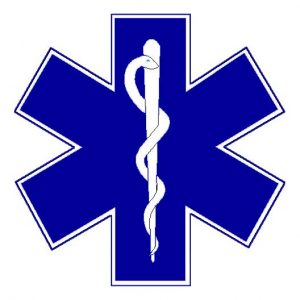A town hall meeting on EMS services last week was “the beginning of the conversation,” according to Kennett Borough Mayor Matt Fetick.
It did not deal with the question of whether Kennett Fire Company’s ambulance service would continue to provide Basic Life Support services in Kennett Borough and part of Kennett Township, something officials and residents from both municipalities have been discussing during the last year.
“We’re not at the moment specifying a path forward,” Fetick said, “but we want to work together.”
Addressing a crowd of more than 50 people – including representatives from Kennett, Longwood, and Po-Mar-Lin fire companies – Fetick said the meeting was a chance to educate people who don’t understand the difference between advanced (ALS) and basic life support (BLS) services.
The Kennett Area Fire and Emergency Services Regional Commission, formed in 2017, represents both municipalities as well as Pennsbury, Pocopson, East Marlborough, and Newlin, and oversees the operational and capital expenses for Longwood and Kennett’s ambulance services and for Kennett, Longwood, and Po-Mar-Lin fire companies. Two representatives from each municipality, as well as representatives from the fire services, sit on the board, which meets monthly at the Kennett Township building at 7 p.m. and are  open to the public. The next meeting is March 12.
open to the public. The next meeting is March 12.
Longwood Fire Company provides ALS and BLS services in Pennsbury, Pocopson, East Marlborough, Newlin, and part of Kennett Township, and ALS services in Kennett Borough. Kennett Fire Company provides BLS services in the borough and part of Kennett Township. In June, Longwood Fire Company submitted a proposal to the Kennett commission to have it provide BLS and ALS service to all the municipalities, with a condition that Kennett’s EMS staff have hiring priority, according to the minutes of the November commission meeting. The proposal was withdrawn in December.
The town hall meeting on March 6 was, as Fetick told those in attendance, a chance to “continue to find common ground.”
Dylan Ferguson, the Bureau of Emergency Medical Services director for the Pennsylvania Department of Health, said the main goal of the meeting was to ensure that the community and officials have the information they need to make the best decision.
“EMS is unlike any other health system,” Ferguson said.
He began by summarizing the duties of Pennsylvania’s Bureau of EMS, which include initial certification of emergency medical providers, licensing EMS agencies, collecting data, and preparing and responding to disaster and emergency preparedness situations.
The department has 13 regional EMS councils, of which Chester County is one. It oversees 1,258 EMS agencies – including ALS, BLS, Quick Response Service and air ambulances. According to Ferguson, 70 percent of the licensed agencies in Pennsylvania are either QRS or BLS.
In Pennsylvania, there are 42,296 EMS providers, more than 29,000 of which are Emergency Medical Technicians. Another 6,948 are paramedics.
EMTs, who provide BLS care, are able to give naloxone for overdoses, use a CPAP machine, perform blood glucose tests, and more, Ferguson said. EMTs have to complete 180 hours of initial training.
Paramedics can administer 40 different medications and have to complete 1,000 hours of initial education, spend hundreds of hours in the back of an ambulance with a preceptor, and spend thousands of hours doing clinical time in the hospital, according to Ferguson.
He explained that every EMS agency – regardless of whether it was ALS, BLS, or the other types – has to have medical command, which is a physician that is consulted.
Staffing, much like training requirements, vary according to the vehicle. A Quick Response Vehicle can get a patient’s information and prepare the patient for transport. A BLS vehicle can either have one EMT, making it a non-transport squad, or an ambulance with two providers. An ALS vehicle has crew requirements specific to whether it’s a squad or an ambulance.
Critical Care Transport provides the highest level of ground care, Ferguson said, and transports patients only between facilities. An air ambulance is designed for emergency scene or 911 calls.
Ferguson explained that townships, borough and cities are responsible for ensuring that their municipalities have fire and EMS coverage. Usually in January, at the annual reorganizational meetings, municipalities designate the fire and EMS providers for their residents.
He also talked about the impact of declining levels of volunteerism and how, at one time, the fire and EMS services were staffed “almost entirely by volunteers.” But with more two-income households, people working longer and harder, an increasing call volume, and continuing expectations of having someone respond when you call 9-1-1, “we are rapidly approaching the point where demand will not meet supply,” Ferguson said.
("Full disclosure: The author is a former employee of Longwood Fire Co.")
About Monica Fragale
Monica Thompson Fragale is a freelance reporter who spent her life dreaming of being in the newspaper business. That dream came true after college when she started working at The Kennett Paper and, years later The Reporter newspaper in Lansdale and other dailies. She turned to non-profit work after her first daughter was born and spent the next 13 years in that field. But while you can take the girl out of journalism, you can’t take journalism out of the girl. Offers to freelance sparked the writing bug again started her fingers happily tapping away on the keyboard. Monica lives with her husband and two children in Kennett Square.


Comments